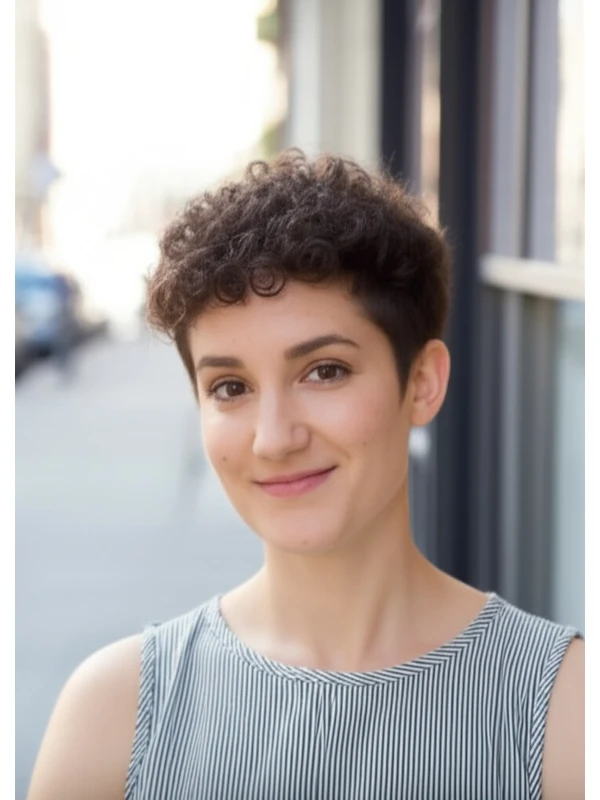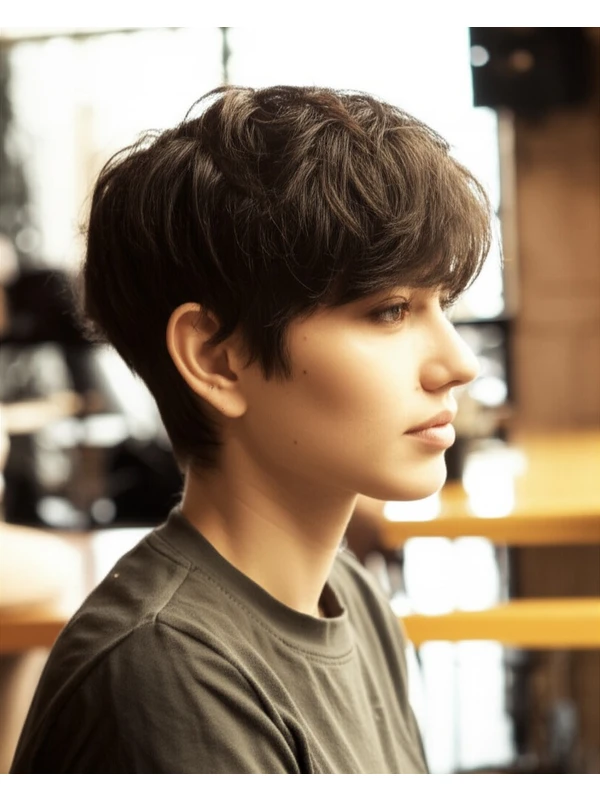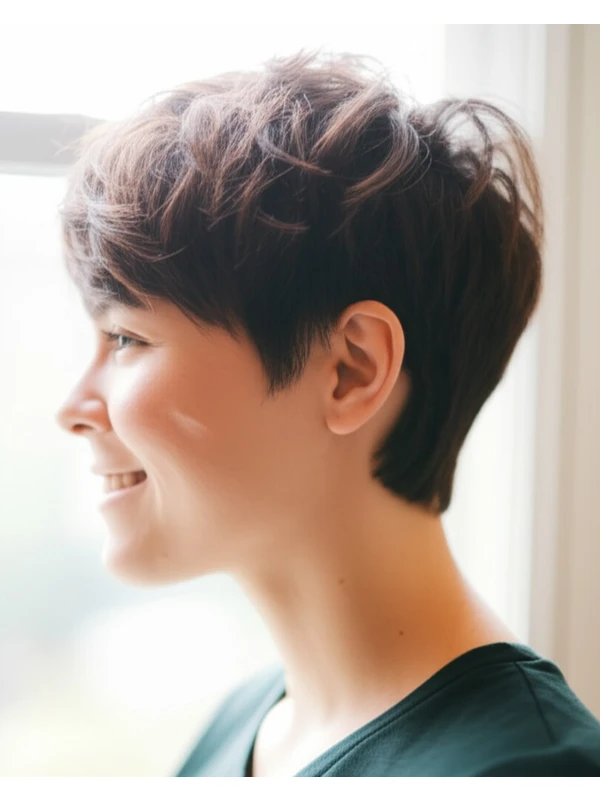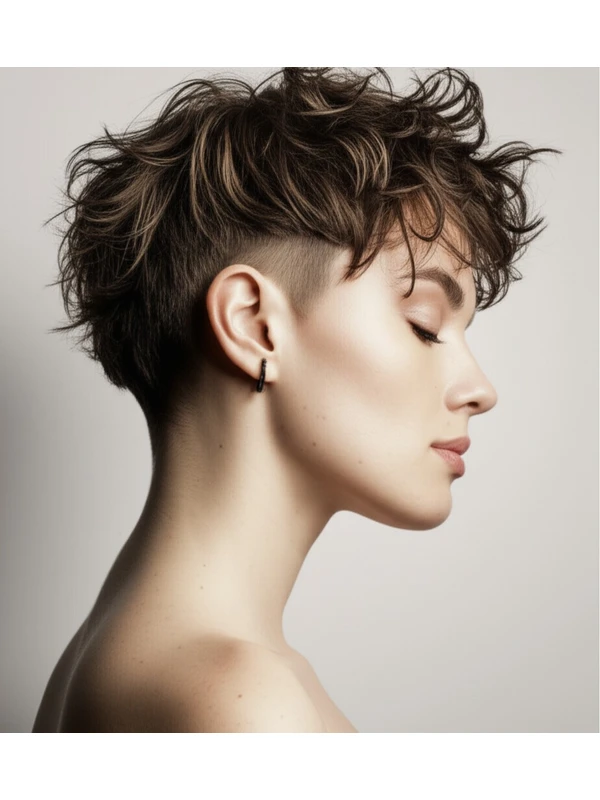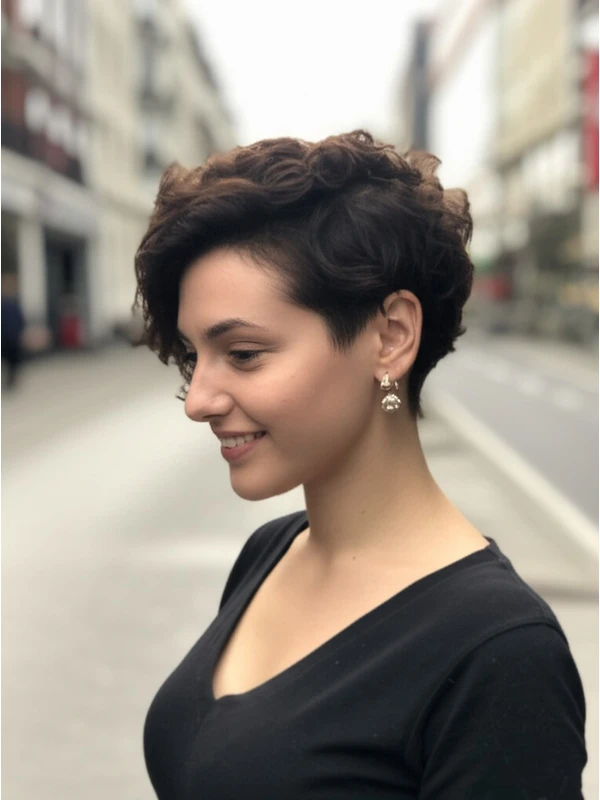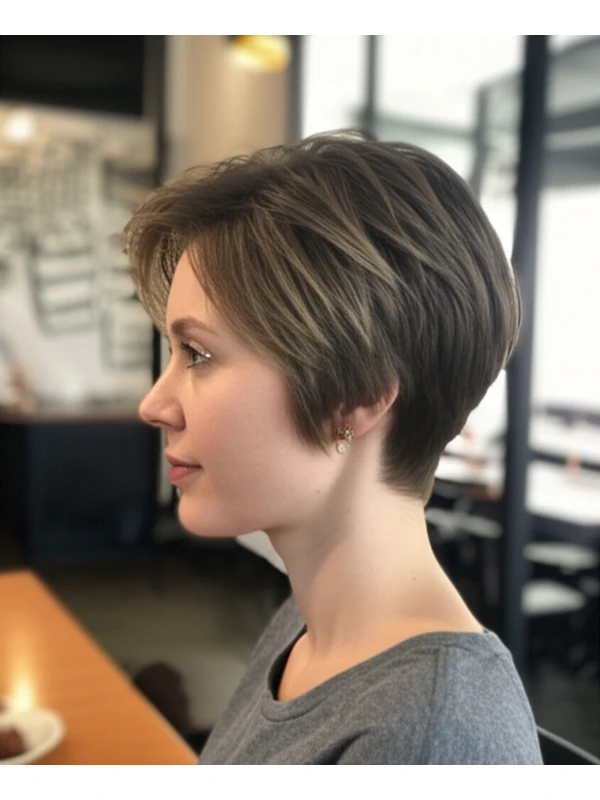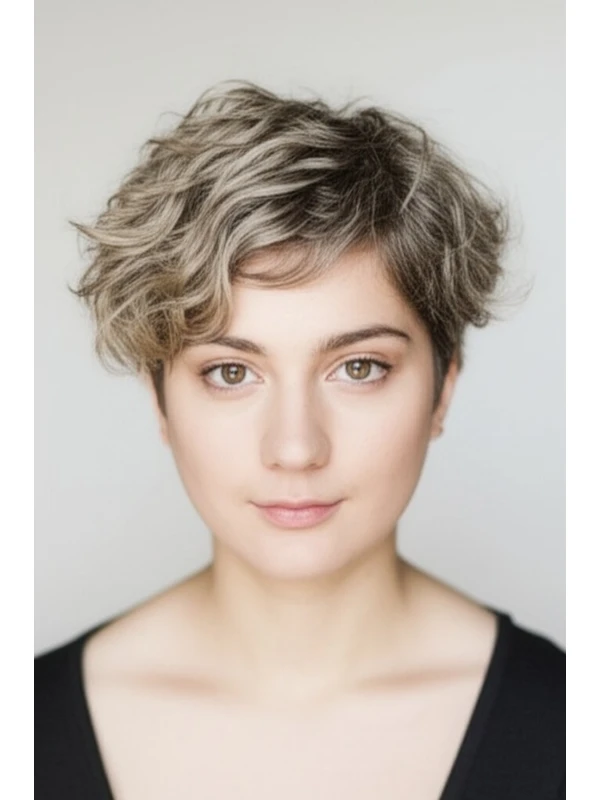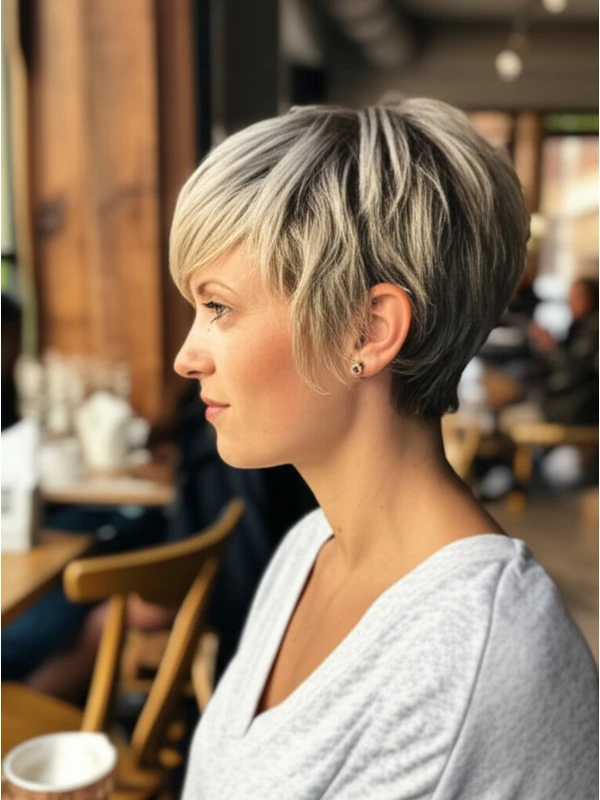#The French Crop: A Modern Classic
The French crop haircut is having a moment – and for good reason! It's effortlessly cool, adaptable to many face shapes, and surprisingly easy to style (with the right approach). But what is a French crop? This guide breaks down everything you need to know before taking the plunge.
#1) Background & Definition: What is a French Crop?
The French crop isn't just about being short; it’s about geometry and balance. It typically involves:
- Short Back & Sides: The hair is significantly shorter on the back and sides, creating a clean contrast with the longer top.
- Textured Top: The top section features layers that create texture and movement – this is key to its characteristic "undone" look.
- Defined Fringe (Bang): A blunt or slightly textured fringe sits across the forehead, often shorter than the rest of the hair on top. This can be a defining feature!
- Length Ranges: Typically, the back and sides are 1-3 inches long, while the top ranges from 2-4 inches. Variations exist – some French crops have a longer fringe or more dramatic side tapering.
Alternative Names: You might also hear it called a "cropped fringe," a "textured crop," or sometimes (less accurately) just a “short textured haircut.”
#2) Face Shape Fit: Finding Your Angle
The French Crop's versatility shines in how you adapt the fringe and overall length to suit your face shape.
- Oval: Lucky you! This cut generally flatters oval faces beautifully as it balances proportions. A blunt, straight fringe works well.
- Round: A slightly angled or textured fringe helps elongate a round face. Avoid a very blunt, heavy fringe that can emphasize width. Keep the top section with some height to add length visually.
- Square: Soften those angles! An asymmetrical fringe (slightly longer on one side) works wonders for softening a strong jawline. Avoid overly geometric cuts; embrace texture.
- Heart: A French crop can balance a wider forehead and narrow chin. A slightly wispy or feathered fringe helps soften the heart shape. Volume at the crown is your friend!
- Diamond: Similar to heart shapes, a French crop softens diamond faces. A side-swept fringe draws attention away from prominent cheekbones.
- Oblong (Long): A longer fringe that blends into the rest of the hair can help visually shorten an oblong face. Avoid styles with too much height on top, which will accentuate length.
#3) Body Proportions & Height Guidance: Playing with Silhouette
The French crop's impact goes beyond your face; it affects your overall silhouette.
- Petite: A shorter French Crop (shorter fringe and less volume on top) can prevent the head from appearing too large in proportion to the body.
- Average Height: Most variations of the cut work well for average heights. Experiment with different fringe lengths and volumes.
- Tall: You can handle more volume on top! A slightly longer French Crop, with a fuller fringe, balances height effectively.
- Narrow Shoulders: Volume at the crown will visually broaden shoulders.
- Broad Shoulders: Keep the sides relatively close-cropped to avoid adding extra visual width.
- Short Neck: Avoid overly long fringes that can emphasize a shorter neck; keep it above the eyebrows or slightly longer, but angled.
- Long Neck: A fuller fringe and more volume on top help balance a longer neck.
#4) Works Best With Hair Types & Densities: Texture Matters!
This cut is adaptable, but certain hair types need adjustments.
- Straight Hair: The French Crop shines with straight hair – the texture naturally falls into place.
- Wavy Hair: Embrace the natural wave! A layered French crop enhances movement and avoids a triangular shape.
- Curly/Coily Hair: This cut can work, but shrinkage is crucial to consider. What looks like 3 inches in a salon might shrink to 1.5-2 inches on your head. Consult with a stylist experienced in cutting textured hair.
- Fine Hair: Layering is key! It creates the illusion of more volume. Avoid blunt cuts that can make fine hair look even thinner.
- Medium/Thick Hair: This cut works beautifully, allowing for texture and movement.
- Density Tips: For thicker densities, ask your stylist to thin out the layers to prevent a bulky appearance.
#5) Styling Variations: From Casual Cool to Evening Chic
The French Crop is incredibly versatile!
- Sleek vs Textured: Use smoothing serums for a polished look or texturizing creams/mousses for an undone vibe.
- Middle vs Side Part: A middle part offers symmetry, while a side part adds asymmetry and visual interest.
- Fringe Variations: Blunt, wispy, feathered, angled – the fringe is your playground!
- Occasion Styling:
- Casual: Air-dry with a texturizing product for effortless style.
- Office: A sleeked-down fringe and neatly styled top create a professional look.
- Evening: Add shine serum, tease the roots for volume, or slick back the sides for an edgy vibe.
#6) Maintenance: Keeping it Fresh
- Trim Cadence: Every 4-6 weeks is typical to maintain shape and prevent overgrowth.
- At-Home Routine: Wash hair 2-3 times per week (adjust based on scalp needs).
- Heat vs Air Dry: Air drying enhances texture; heat styling provides more control but can damage hair with overuse.
- Product Checklist:
- Shampoo & Conditioner: For your hair type.
- Leave-In Conditioner: Especially for wavy, curly, or coily hair to manage dryness and frizz.
- Styling Cream/Mousse: To enhance texture (for straight/wavy). Curl cream/gel (for curls/coils)
- Finishing Serum/Oil: For shine and flyaway control.
- Estimated Daily Styling Time: 5-15 minutes, depending on desired style.
#7) Grow-Out Roadmap: The Evolution of Your Crop
- Months 1-3: The fringe will start to lengthen, potentially covering more forehead. Maintain the shape with trims.
- Months 3-6: The top section grows out, losing some initial texture. Regular trims are essential to prevent a boxy look. Consider asking your stylist for face-framing layers.
#8) Color Pairings: Elevating Your Look
- Cool Undertones (blonde, ash brown): Icy blondes and cool browns complement the cut's sharpness.
- Warm Undertones (golden blonde, copper): Rich golden tones add warmth and dimension.
- Low-Commitment Options: Root smudging or balayage can add depth without a drastic color change.
#9) Season & Occasion Guide: Adapting to the Moment
- Spring/Summer: Lighter styling products, air drying for effortless texture.
- Fall/Winter: Add more volume at the roots for warmth and dimension; use richer moisturizing products.
- Work: Sleek fringe, controlled top – professional and polished.
- Weddings/Parties: Experiment with textured styling and subtle color accents.
#10) Cost & Time: What to Expect
- Salon Time: Typically 30-60 minutes for the initial cut. Subsequent trims will be shorter (15-30 minutes).
- Price Range: The cost can vary significantly depending on location and stylist experience, but expect a range of slightly above average price point.
#11) Pros & Cons: The Trade-Offs
Pros:
- Effortlessly cool style.
- Versatile – adaptable to many face shapes and hair types.
- Relatively low maintenance (with proper trimming).
- Can create the illusion of thicker hair with layering.
Cons:
- Requires regular trims to maintain shape.
- Styling can take time if you want a polished look.
- Not ideal for all curly/coily hair types without expert styling and cutting.
#12) Salon Consultation Script: Your Checklist
Here are some prompts to guide your conversation with your stylist:
- "I'm interested in a French crop, but I’m concerned about my [face shape/hair texture]. Can we discuss how to adapt it?"
- “Can you show me examples of French crops on people with similar hair types and face shapes as mine?”
- "What fringe length would best suit my face?"
- "How can we incorporate layers to add volume (or avoid bulkiness)?"
- "I’m looking for a low-maintenance style. What products will I need, and how long should styling take each day?"
#FAQs: Your Burning Questions Answered
- Can anyone get a French Crop? While adaptable, it's best suited for hair with some length on top. Very short, blunt cuts might not achieve the desired effect.
- Is this style aging? Absolutely not! It’s timeless and can be styled to suit any age group.
- How much will my hair shrink if I have curls/coils? Significant shrinkage is likely – discuss length expectations with your stylist beforehand, accounting for at least 50% shrinkage.
- Can I style it myself or do I need a professional? With practice and the right products, you can definitely style it yourself! But initial shaping requires a skilled stylist.
- Will this cut make my hair look thinner? Layering helps create volume but if your hair is very fine, ensure the layers are not too short or choppy as that could accentuate thinness.
- What’s the best way to manage frizz with this style? Use a smoothing serum or oil after styling and consider a leave-in conditioner for extra moisture.
